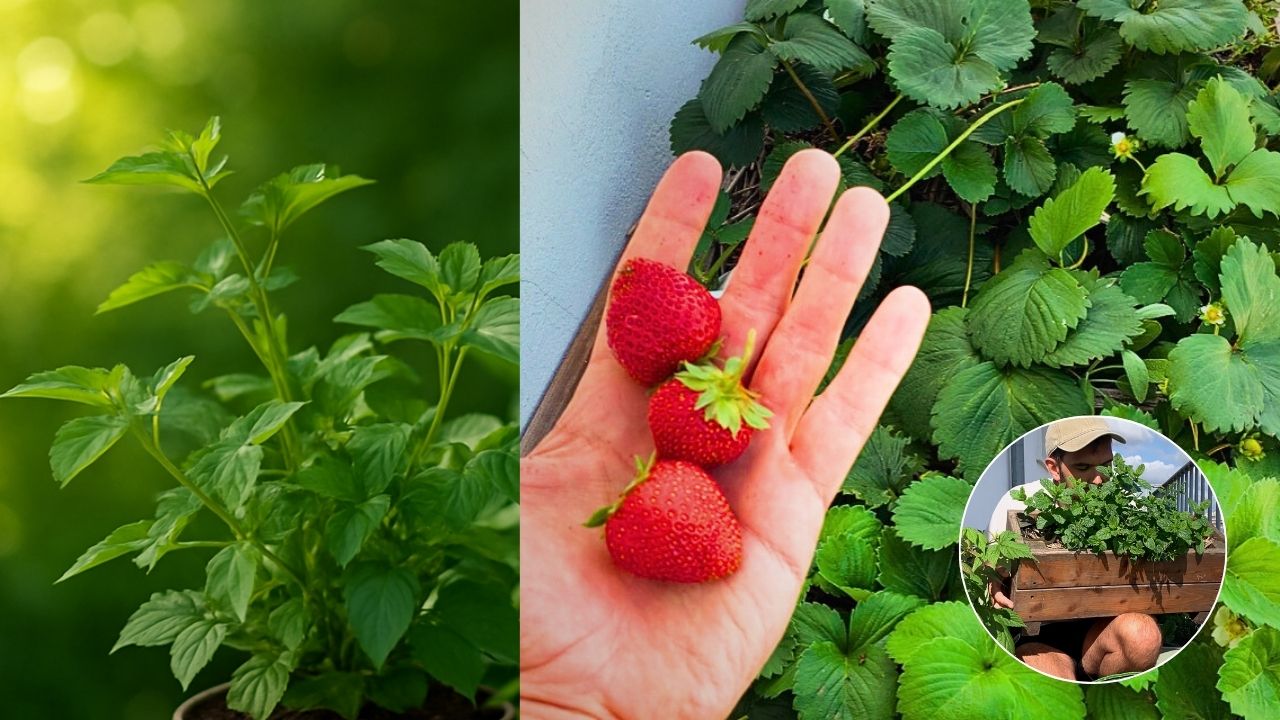Looking for the best plants for partial sun? You’re in the right place. Partial sun (also called partial shade) means an area that gets about 3 to 6 hours of direct sunlight per day, often in the morning or late afternoon, or dappled light filtered through trees.
The good news is that many vegetables, herbs, and ornamental plants actually thrive in partial sun. In this guide, you’ll discover the top options for edible and decorative gardening, along with practical care tips to help your plants flourish.
Want to grow fresh food even without a garden? Get my PDF guide and discover how to grow delicious vegetables and herbs in any small space.
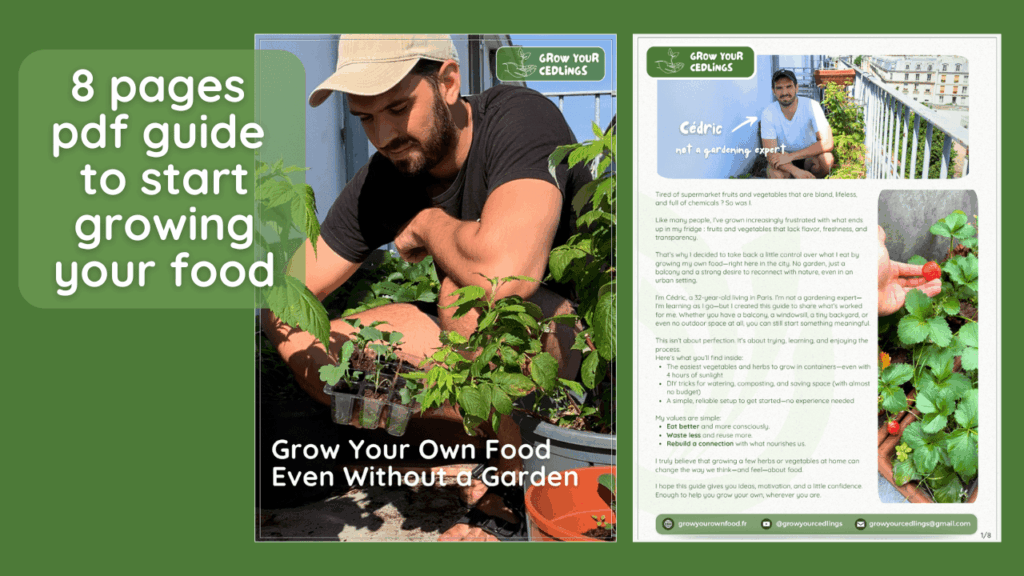
Understanding Partial Sun
Before planting, it’s important to know what kind of partial shade you have:
- Morning sun – gentle light, perfect for leafy greens and delicate flowers.
- Afternoon sun – stronger light, suitable for slightly tougher crops.
- Filtered or dappled light – through trees or pergolas, ideal for shade-loving ornamentals.
⚠️ Common mistakes to avoid:
- Overwatering – soil stays moist longer in the shade, so water less frequently but more deeply.
- Tree root competition – avoid planting too close to large trees that steal water and nutrients.
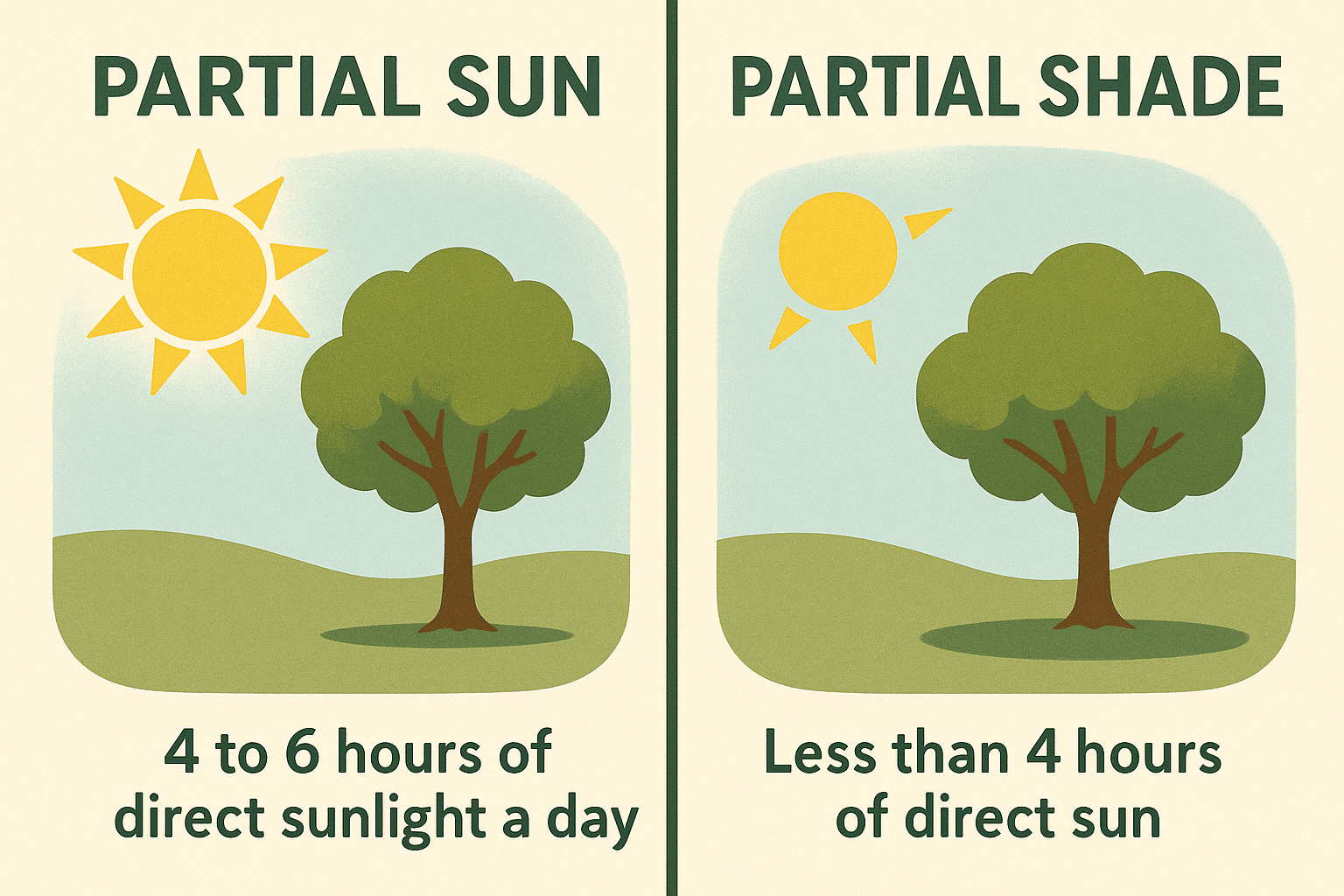
Partial Sun and Orientation: North, South, East, West
Orientation plays a huge role in how much light your garden or balcony receives:
- North-facing (least sun)
Gets the least direct light, usually cool and shaded most of the day. Best for ferns, hostas, ivy, mint, parsley, and leafy greens like lettuce or spinach. - East-facing (morning sun)
Receives soft, gentle light in the morning and shade in the afternoon. Ideal for delicate herbs (chives, cilantro), flowers like impatiens and begonias, and cool-season crops such as arugula or kale. - South-facing (most sun)
Gets the strongest and longest exposure. Even in “partial shade,” plants here experience more intense light. Perfect for tomatoes, peppers, strawberries, and sun-tolerant herbs like rosemary or thyme—though some shade-tolerant plants may still thrive with protection. - West-facing (afternoon sun)
Hotter and more intense than morning sun. Good for root crops like carrots and radishes, tougher herbs (oregano, sage), and flowers that can handle stronger light such as geraniums or fuchsias.
👉 Tip: If you’re gardening on a balcony or patio, note how the sun moves across your space through the day to match plants with the right spot.
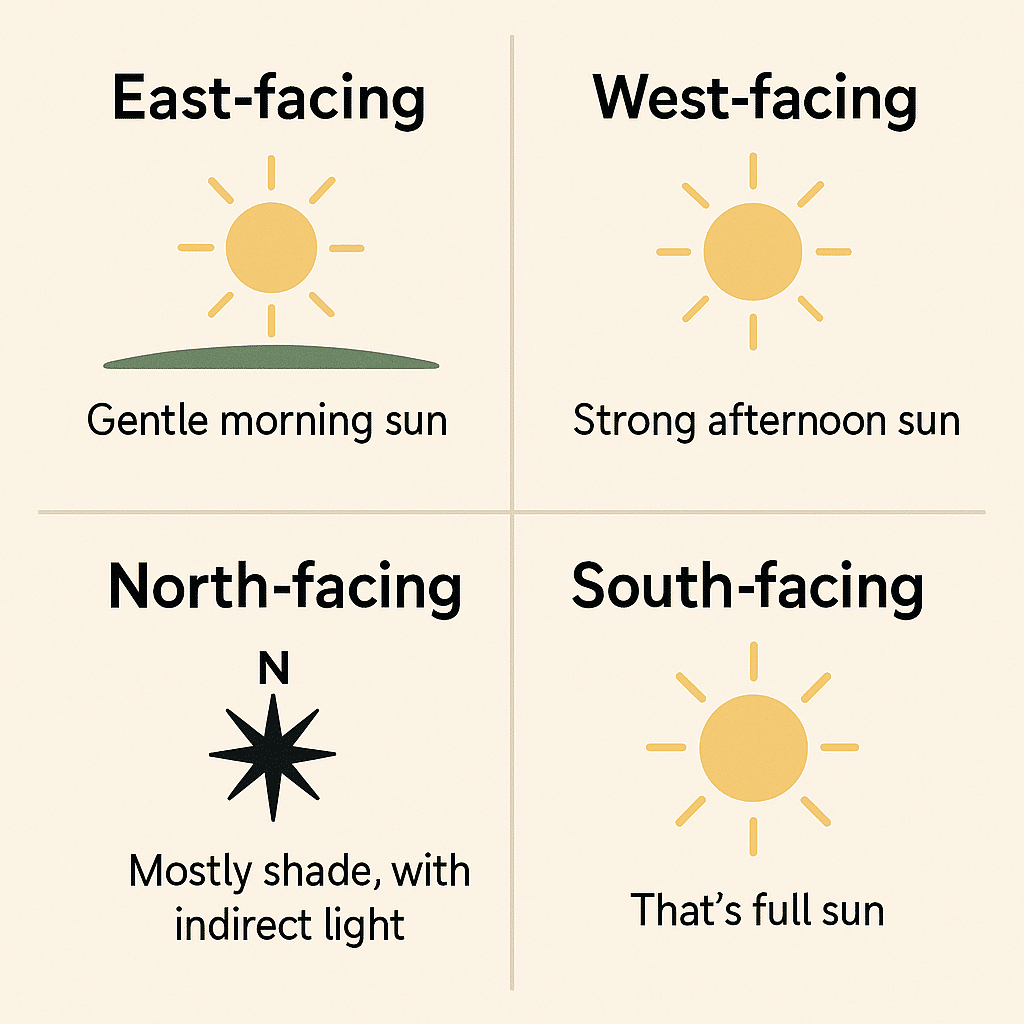
Vegetables and Fruits That Love Partial Sun
Leafy greens
- Lettuce & spinach – Grow well in cooler, shadier spots; slower to bolt compared to full sun.
- Arugula & mâche (corn salad) – Resilient, quick to grow, and productive in partial shade.
- Kale & Brussels sprouts – Flavor improves with cooler, lower-light conditions.
Root vegetables
- Radishes – Fast and reliable even with just a few hours of sun.
- Carrots – May stay smaller than in full sun but remain sweet and crisp.
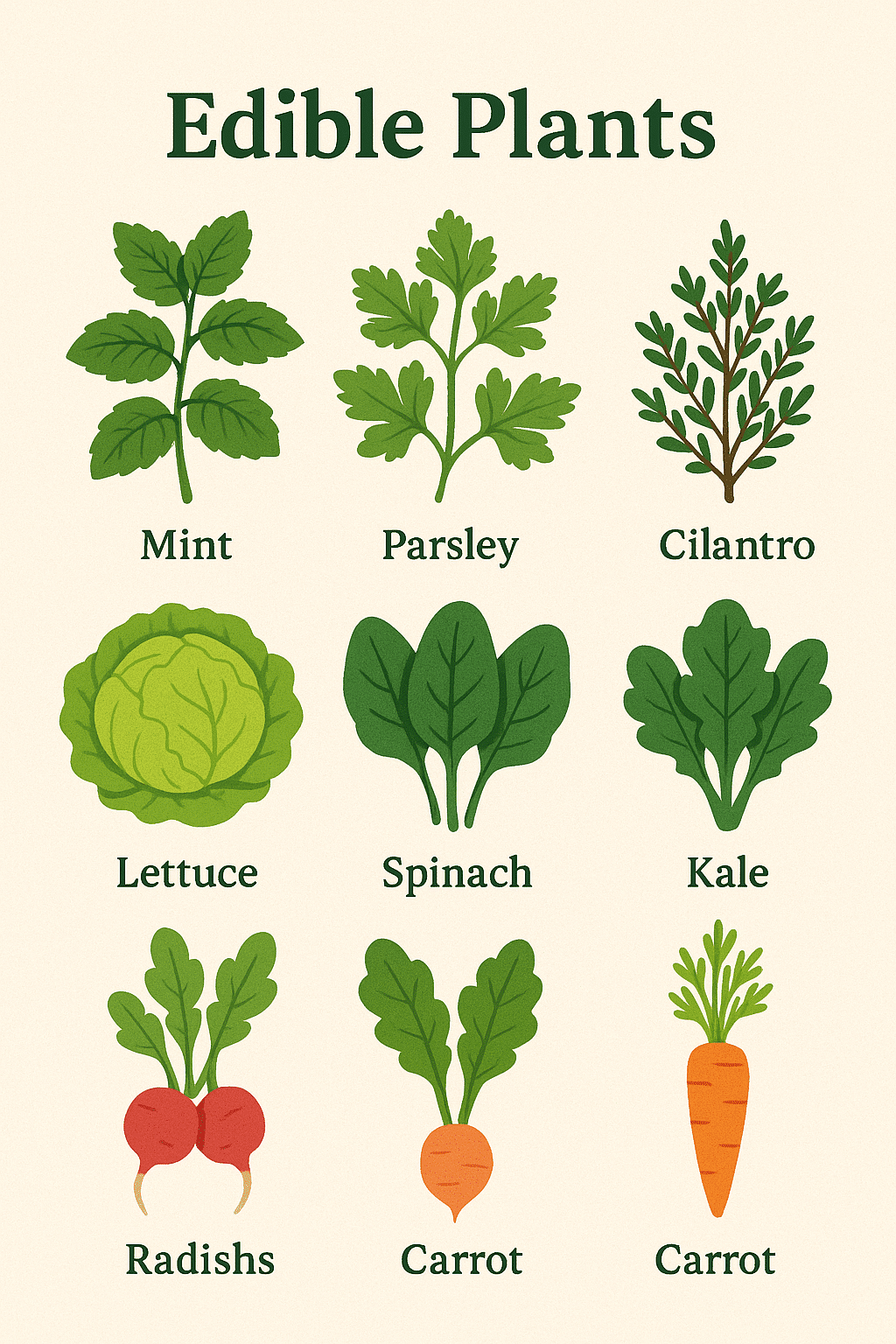
Culinary Herbs for Partial Sun
Parsley – Classic herb that thrives in partial sun.
Mint & watercress – Love humidity and filtered light; keep them well-watered.
Chives – Hardy and easy, will keep producing in less-sunny conditions.
I’ve also made a video where I walk you through the best plants for partial sun and how I grow them on my own balcony. It’s full of easy, practical tips you can apply right away.
Ornamental Plants That Shine in Partial Sun
Flowering plants
- Impatiens, begonias, fuchsias – Bright blooms that light up shaded areas.
- Hostas & ferns – Stunning foliage, low-maintenance, and highly decorative.
Climbing plants
Climbing hydrangea – Adds flowers and texture to trellises or shaded facades.
Ivy – Evergreen and fast-growing, great for walls and fences.
Care Tips for Partial Sun Gardening
- Watering – Shade means slower evaporation; water less often, but deeply.
- Fertilizing – Plants in partial shade grow slower and need less feeding.
- Protection – Watch out for snails and slugs, which thrive in damp, shady conditions.
Partial sun isn’t a limitation – it’s an opportunity. With the right choices, you can grow delicious vegetables, fragrant herbs, and vibrant ornamentals in these conditions. From lettuce and parsley to fuchsias and ferns, the best plants for partial sun can transform a shaded balcony or garden corner into a thriving green haven.
🌱 Start experimenting with the options above, and you’ll soon discover that partial shade can be just as rewarding as full sun.
Join Our Balcony Gardening Community !
Share your balcony garden progress, get feedback from other urban gardeners, and discover new ideas every week.

